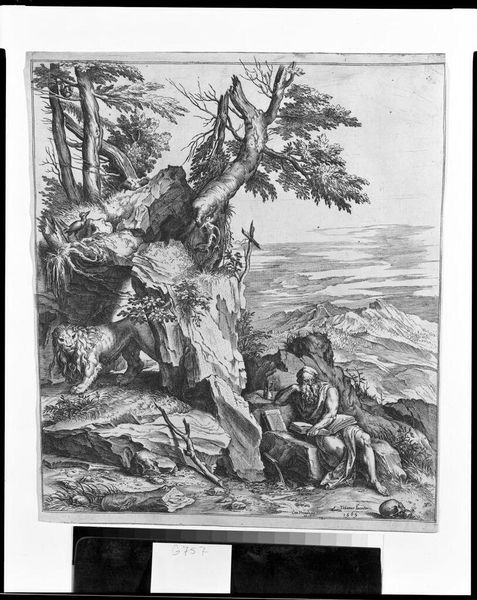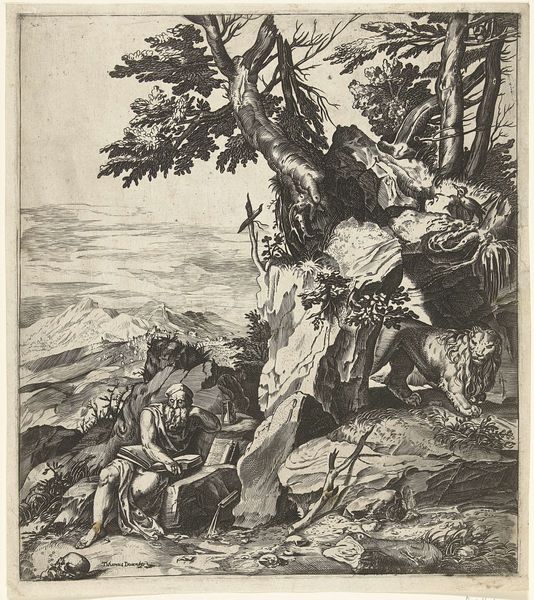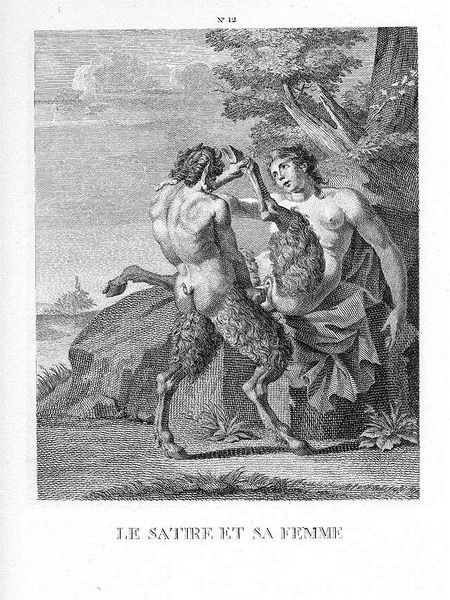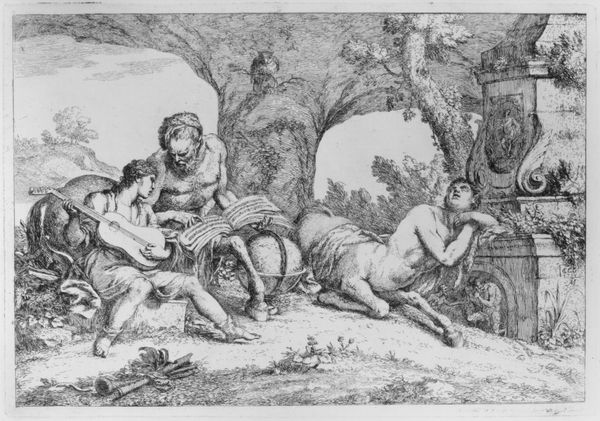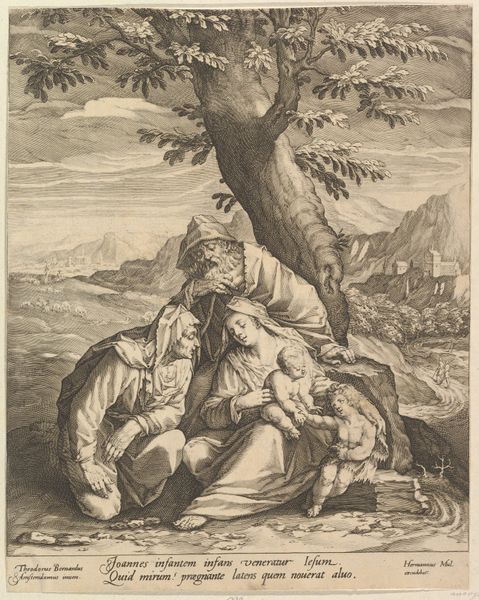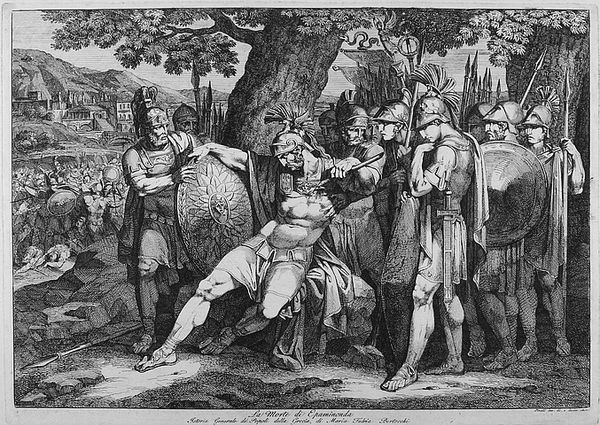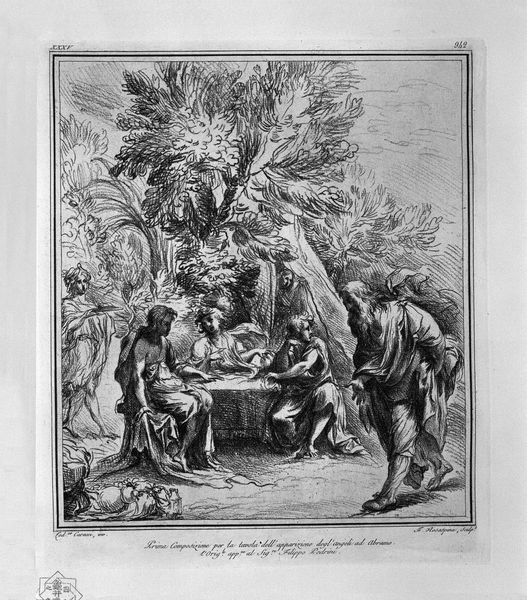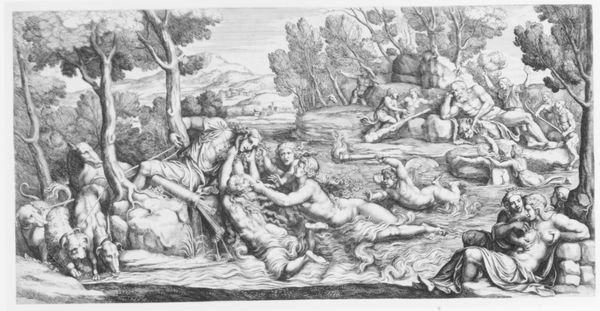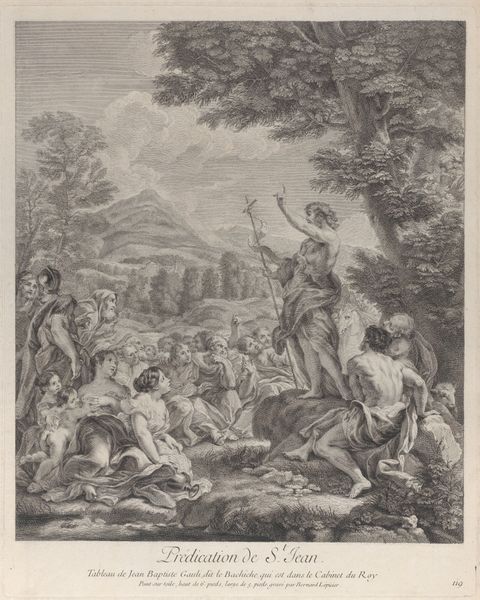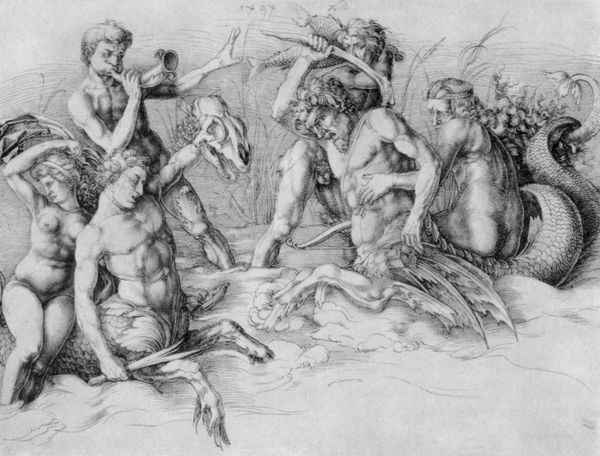
drawing, print, engraving
#
drawing
# print
#
landscape
#
line
#
history-painting
#
northern-renaissance
#
engraving
Dimensions: Sheet: 12 5/16 × 11 1/8 in. (31.3 × 28.2 cm)
Copyright: Public Domain
Curator: Cornelis Cort’s engraving, "St Jerome in the Desert," dating to 1565 and held here at the Metropolitan Museum, immediately strikes me as starkly isolated. The sharp contrast between the light figure and the darker natural environment highlights Jerome’s hermetic withdrawal from society. Editor: It's fascinating how the texture is created through these delicate lines. It feels like a meticulously crafted environment, everything precisely considered. Look at the lion; you can almost feel its coarse mane! It's the raw materiality contrasted with the refinement of Cort’s skill that captures my attention. Curator: Absolutely. The juxtaposition of civilization, represented by Jerome’s scholarship, and the untamed wilderness—symbolized not just by the lion, but also the rugged landscape—speaks volumes about the internal conflicts that fueled the Reformation. It invites reflection on faith, knowledge, and societal anxieties. Editor: The engraving's deliberate use of line invites an exploration of its creation, how that wilderness space was crafted. It compels us to reflect upon the printing process of its time—the tools, labor, and means of production necessary for creating such texture and precision. What does the print's replication reveal about accessibility, labor, and the making of images at that time? Curator: Well, consider this. Prints allowed images and ideas to circulate widely, reaching broader audiences beyond the elite. "St. Jerome," for example, tapped into contemporary debates surrounding religious reform, individual piety, and humanist values, impacting even the way everyday viewers interacted with their faith. It became part of a cultural conversation. Editor: Indeed. This access to materials and production informs our very consumption and value placed on "high art". The focus becomes shifted back to labor through print production by thinking about the tools that shaped his engraving: considering these instruments democratizes a material and expands a context to understand production today. Curator: Thinking about "St. Jerome in the Desert" through those layers definitely enriches the experience. Considering it within a matrix of religious and socio-political concerns as a dialogue adds another dimension. Editor: Seeing "St. Jerome" from that perspective invites me to reconsider all images, prompting analysis around process, access, and artistic intention when they meet consumption.
Comments
No comments
Be the first to comment and join the conversation on the ultimate creative platform.
